A lot of what we find at archaeological sites is refuse. Just like you can tell what someone had for dinner last week by the leftovers they throw in their garbage can, you can tell what someone ate 500 years ago by the waste products they produced.
At Kiskiak, there is evidence of a long line of posts which was probably a palisade wall to protect the town. Just outside of this wall, there is a long ditch stretching down the York River coastline. This ditch may have been used for protective measures, but lots of oyster shells were also disposed of near the ditch, making it a complex and interesting feature. It’s also possible that the palisade wall and ditch were markers of ceremonial space at Kiskiak. Much closer to the bank of the creek, there is a midden with even more oyster shells. It makes sense that this large volume of food waste would be disposed of farther from the area where people resided. These hundreds of shells may indicate that the Kiskiak were holding large feasts and celebrations.
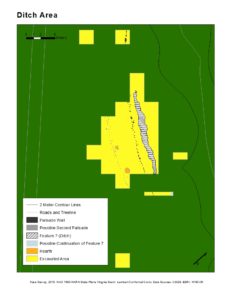
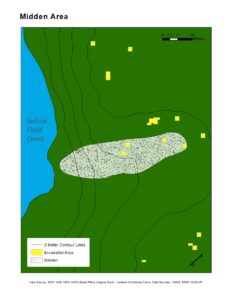
Many American Indian archaeological sites contain pot sherds, or pieces of ceramic containers. How did native people make these pots? This process began with clay and temper. Temper is a material that keeps a container from breaking since clay by itself is not as strong as clay mixed with other substances. At Kiskiak, people often used pieces of shells or crushed rocks as temper. The next step involved shaping the clay into long coils and wrapping these coils into the shape of a container. People still use a similar method to make coil pots today!
Ceramic containers have always been incredibly useful for storing and cooking food, but they were also decorated with ornate patterns. Decorated ceramics are the precursor to your grandma’s decorated china plates. Plates don’t have to be painted in order to be functional, but the decoration is important for other reasons, such as artistic value. In order to form a pot, native people would use a paddle to shape the outside surface of the vessel. These paddles would be covered with different materials in order to create decorated patterns. This decoration is called surface treatment in archaeology and is a very important source of information.
The methods with which ceramics are decorated have changed over time. Archaeologists can look at a piece of a pot and tell what the outside has been stamped with. When we look at ceramic sherds from Kiskiak, we usually see that the outer surface has a pattern created by a net, a piece of fabric, or a thin cord. Cords used for this purpose were made of twisted plant fibers. Surface treatment and temper can help tell us who made a ceramic container and when.
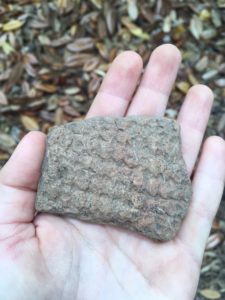
A net impressed ceramic sherd; we identify net impressed ceramics by the indentations where the strings of the net intersect – they often make a pattern of little circles.
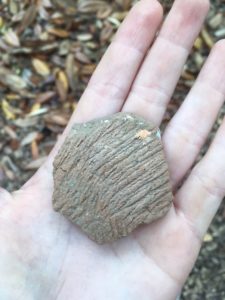
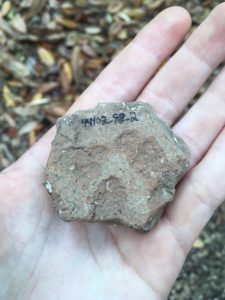
A cord marked ceramic sherd; the inner face has preserved human fingerprints!

Profile of the same sherd showing the shell temper
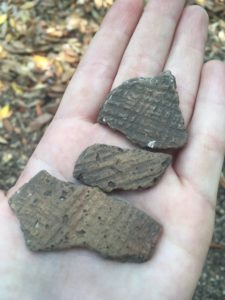
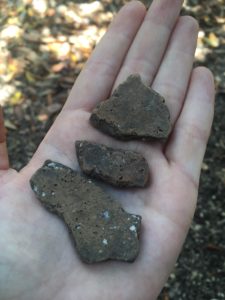
These sherds are decorated with a technique called simple stamp. As its name suggests, the ceramic was stamped with a very simple pattern.